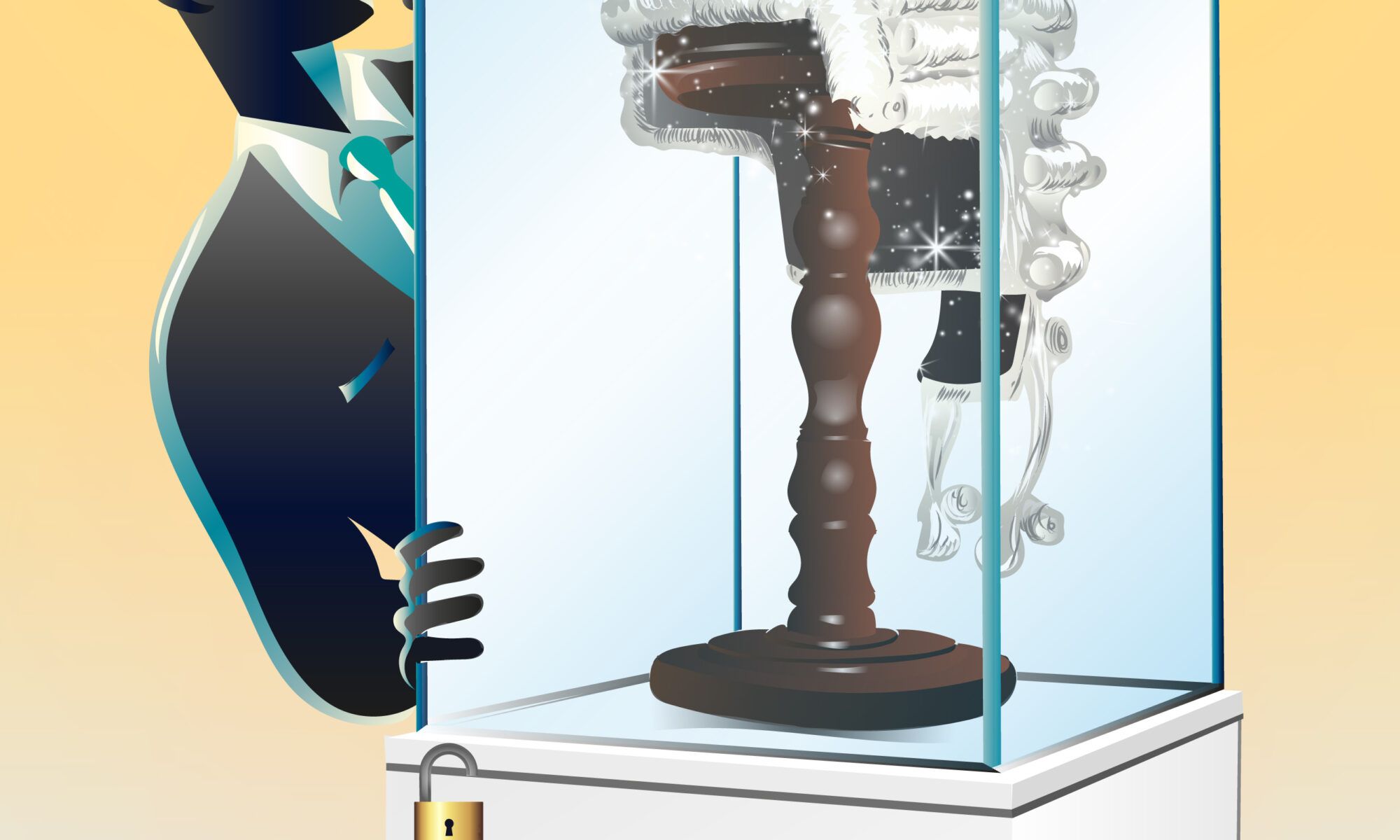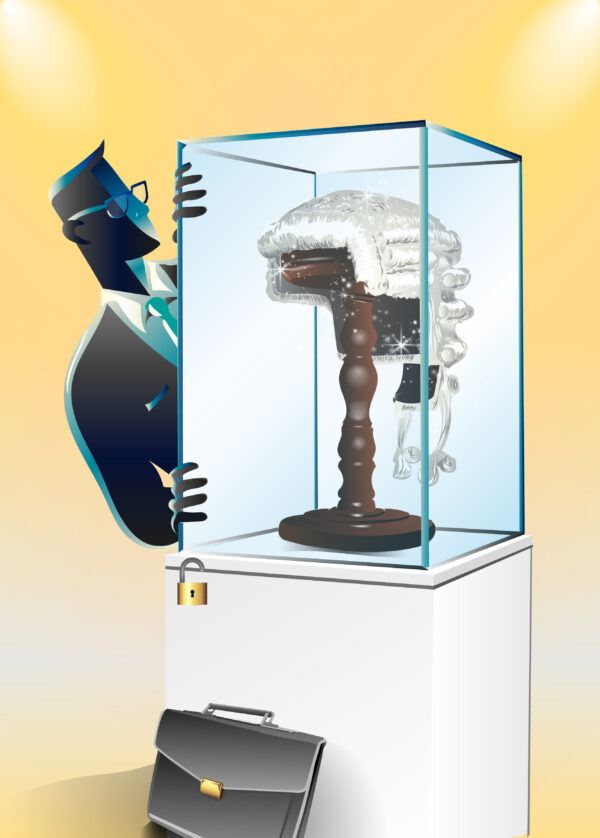Why do City solicitors join the ranks of the independent Bar? The answer to that question is as varied as the partners and associates who leave the ivory towers of Big Law behind for a life in chambers – bewigged or otherwise.
Within the last decade, former partners and department heads such as Judith Gill QC at Twenty Essex, Peter Rees QC at 39 Essex, Nicholas Fletcher QC and John Bellhouse at 4 New Square, Christopher Style QC and Ian Terry at One Essex Court, and, most recently, Brian King at 3 Verulam Buildings and 3 Hare Court’s Jeffrey Golden, have all transitioned from the Magic Circle and international firms to successful arbitrator and mediator practices in chambers.
Others high-profile partners, such as Brick Court’s Jon Lawrence, Matrix’s Raj Parker, and Wilberforce’s David Pollard (all ex-Freshfields), as well as David Brynmor Thomas QC and Steven Lim at 39 Essex, Paul Cowan at 4 New Square, Etienne Wong at Old Square Tax Chambers, Matthew O'Regan at St John’s Chambers, and Fountain Court’s Andrew Pullen (formerly a consultant on the partnership track at Allen & Overy), have all gone on to establish successful counsel practices in their respective fields.
At the more junior, 3 Verulam Buildings has made a strategy of picking up promising senior associates, such as Mark Wassouf and Tariq Baloch (both ex-Freshfields), as well as Scott Ralston, who was previously at Clifford Chance. But they are not the only set to pick up talented litigators who have already cut their teeth in high-profile City practices.
The likes of new silk Daniel Saoul QC and Kendrah Potts at 4 New Square (former Herbert Smith and Mishcon de Reya respectively), Lucas Bastin and Anna Dilnot at Essex Court (ex-Latham & Watkins and Stephenson Harwood respectively); Tom Sebastian at Monckton (formerly A&O); Belinda McRae and Harris Bor at Twenty Essex (Freshfields and SJ Berwin respectively); Sandy Phipps at One Essex Court (ex-Freshfields); and Blackstone’s Fraser Campbell (ex-Clifford Chance) are also notable switchers.
But if you’re thinking of crossing the professional tracks, what do you need to know? Well, two recent defectors – Philip Stear (Travers Smith to Outer Temple Chambers) and Steven Fennell (DLA Piper and Kennedys to Exchange Chambers) – have the answers as they recount their individual journeys to the Bar, discuss why ‘lawyer’ transcends the titles of solicitor and barrister, how speaking the same language as your client is advantageous, and offer practical advice on how to requalify.
And if that isn’t enough to make you start measuring your head for a horse hair wig, Bill Braithwaite QC, head of Exchange Chambers, explains why you could be a big asset to the Bar and what to expect when entering chambers.
When news broke that I was packing my bags for the Bar after 13 years as a pensions partner at Travers Smith, reactions were varied and interesting. I’m not going to say which was which, but here are three reactions from a client, a Travers partner, and a Queen’s Counsel:
- ‘Why on earth would you want to do that?’
- ‘Brave!’
- ‘Fascinating! You’ll have a tremendous time and be a terrific success!’
Actually, I was pretty clear why on earth I wanted to do it. It wasn’t as if I had been hankering after being a barrister during all my time as a solicitor. I loved lots about practice as a partner in a City law firm – getting to build long and strong client relationships; getting to design solutions that work for problems that have seemed intractable – and I loved Travers Smith. It was just that I also loved the law, in all its black letter, footnoted glory, and the commercial hurly burly somewhat kept me away from all that.
As a solicitor, if you can spot a way of avoiding having to tackle a tricky point of law, you do the choreography. I wanted to have an inbox pre-screened so that my to-do list mostly consisted of points that simply had to be confronted, with the chance to argue them out before a judge from time to time and find out if I was right.
Inevitably there are far more solicitors who are former barristers than vice versa, but the traffic between the Bar and the solicitors’ profession is not all one way. In fact, at Outer Temple, out of 89 tenants there are a large handful who started their professional life as solicitors.
The process of transfer to the Bar for a UK-qualified solicitor is bureaucratic and time-consuming but not especially arduous. There seem to be two routes. Route 1, which must have been there for approximately ever, involves sitting a few exams and, if successful, completing three months of pupillage.
Route 2, which I imagine must be the politically correct product of the Courts and Legal Services Act 1990, applies to solicitors with higher rights of audience. Under this route, you basically get waved through without any exams and are exempted from pupillage entirely. And given that the higher rights exams are (probably) rather easier than the Route 1 exams, this begs the question why anyone would ever choose the old way (and perhaps no one does).
It is notable however that the Bar Standards Board (BSB) advises (probably wisely, though it will clearly vary from case to case) that you consider serving a period of pupillage anyway. I had no plans to exercise solicitors’ higher rights of audience once I had them. I made my application to the BSB for transfer the very same day that the higher rights certificate came through from the Solicitors Regulation Authority.
Obviously finding a place in chambers and then building a practice are potentially mountains compared with the molehills of getting the BSB sign-off and being called to the Bar. I was fortunate, as a pensions specialist, to be part of a relatively small community of pensions lawyers – I knew (or knew of) most of the pensions Bar and they knew (or knew of) me. And, equally, I know and am known by many pensions solicitors, and there is no doubt this has helped develop a stream of instructions in the six or seven months since I opened for business early in 2019.
I suppose my experience has been a vindication of the belief that being a ‘lawyer’ is a more important professional identity than being a barrister or a solicitor. Doubtless Outer Temple is less stuffy than some other sets, but I have been pleased to be welcomed as a lawyer among lawyers. And those instructing me know that I know what it is like to be in their shoes, and that what they want is not ex cathedra pronouncements, but the contributions of a team player with shirt sleeves rolled up, helping them to help their clients.
I am having a tremendous time. I have the sort of work diet that I was after. Outer Temple is collegiate and fun and deliciously a little anarchic, as well as committed and hardworking. A strong theme of teamwork within the different practice groups in chambers co-exists with a culture of independence. But I suspect that the wit who suggested ‘managing a law firm was like herding cats’ would have found all metaphor failing her if she had been confronted instead by a set of barristers’ chambers.

